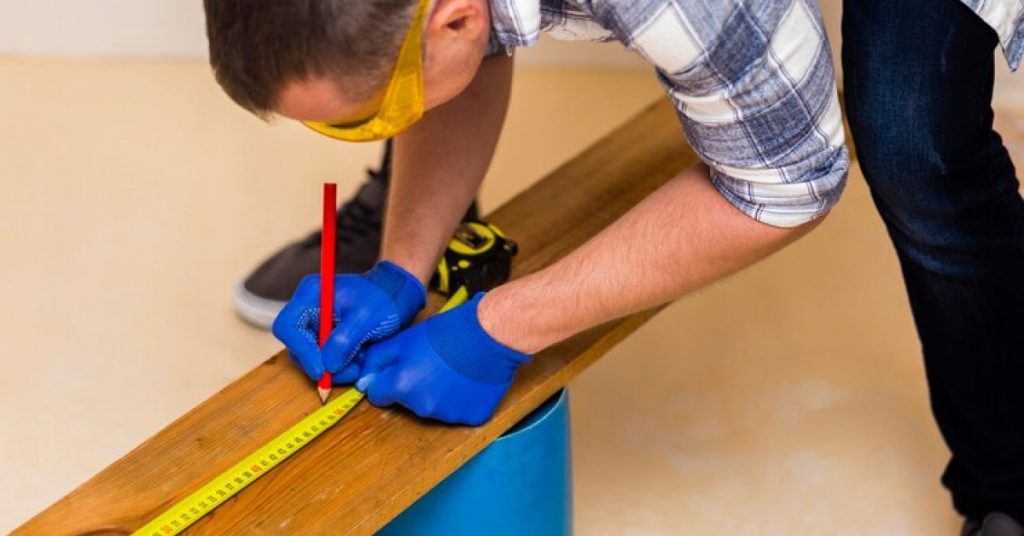Your presence here shows that you want to know that Can You Cut Vinyl Floor With a Miter Saw?
Well!
You’re on right place because we already have worked for you. Vinyl flooring is a popular choice for homeowners due to its affordability, durability, and ease of installation.
However, there are times when you may need to make precise cuts in your vinyl flooring to fit it around corners, edges, or obstacles in your room.
While there are several tools you can use for this task, one question that often arises is whether you can cut vinyl floor with a miter saw. In this article, we’ll explore the feasibility and safety of using a miter saw for cutting vinyl flooring.
Understanding Vinyl Flooring
Before diving into the specifics of cutting vinyl flooring with a miter saw, it’s essential to understand what vinyl flooring is and the types available.
Vinyl flooring is a synthetic flooring material made from a combination of polyvinyl chloride (PVC) and other additives. It comes in various forms, including:
- Vinyl Plank Flooring: Resembles hardwood planks and is typically installed in a floating fashion, with interlocking pieces.
- Vinyl Sheet Flooring: Comes in large rolls and is often used in commercial settings. It can be glued down or installed as a loose-lay floor.
- Vinyl Tile Flooring: Mimics the appearance of ceramic or stone tiles and can be installed with adhesive or as a floating floor.
Regardless of the type of vinyl flooring you have, you may need to make cuts during the installation process. While some cuts are relatively straightforward, others may require more precision, which is where a miter saw might come in handy.
The Miter Saw: An Overview
A miter saw, also known as a chop saw or a drop saw, is a versatile power tool used primarily for making accurate crosscuts and miter cuts in various materials, including wood, plastic, and even metal.
It consists of a circular saw blade mounted on a swing arm that pivots to make angled cuts. Miter saws are commonly used in woodworking and construction, where precise and clean cuts are essential.
Can You Cut Vinyl Flooring with a Miter Saw?
The short answer is yes, you can cut vinyl flooring with a miter saw. However, there are some important considerations and precautions you should keep in mind:
1. Blade Selection:
When cutting vinyl flooring, it’s crucial to use the right type of blade. A fine-toothed, carbide-tipped saw blade designed for cutting plastics is ideal. These blades have teeth that are specially designed to minimize chipping and tearing, providing cleaner cuts in vinyl materials.
2. Safety Gear:
Always prioritize safety when using power tools. Wear appropriate safety gear, including safety glasses, hearing protection, and dust masks to protect your eyes, ears, and respiratory system from potential hazards associated with cutting vinyl flooring.
3. Setting Up the Miter Saw:
Before making any cuts, ensure that your miter saw is set up correctly. The saw blade should be securely fastened, and the saw’s table or work surface should be stable and level. Adjust the saw’s depth and angle settings as needed for your specific cut.
4. Cutting Techniques:
When cutting vinyl flooring with a miter saw, use slow and steady feed rates to prevent melting or warping of the material. Avoid forcing the material through the blade, as this can result in rough and imprecise cuts. Instead, let the saw blade do the work.
5. Support the Material:
Properly support the vinyl flooring material throughout the cutting process. Use sawhorses or a stable workbench to support the material on both sides of the cut. This prevents the material from sagging or vibrating during the cut, resulting in cleaner and safer cuts.
6. Mind the Dust:
Cutting vinyl flooring with a miter saw can produce a significant amount of dust. Make sure to work in a well-ventilated area or use dust collection systems to minimize the dust and debris created during the cutting process.
7. Test Cuts:
Before making your final cuts, it’s a good idea to perform some test cuts on a scrap piece of vinyl flooring. This allows you to fine-tune your technique and ensure that you achieve the desired results.
8. Safety First:
Always prioritize safety when using a miter saw. Follow the manufacturer’s instructions for your specific miter saw model and exercise caution throughout the cutting process.
When Not to Use a Miter Saw for Vinyl Flooring
While a miter saw can be a useful tool for cutting vinyl flooring, there are situations where it may not be the best choice:
1. Curved Cuts:
Miter saws are primarily designed for straight and angled cuts. If you need to make curved cuts in your vinyl flooring, a jigsaw or a utility knife with a curved blade may be more appropriate.
2. Delicate Patterns:
If your vinyl flooring has delicate patterns or intricate designs, a miter saw may not be the best option, as it can result in chipping or tearing of the pattern. In such cases, a utility knife with a sharp blade and a straightedge for guidance may be a better choice.
3. Thin Vinyl:
Extremely thin vinyl flooring materials may not feed well through a miter saw, and they can be more prone to melting or warping. In such cases, a utility knife or a pair of sharp scissors may be more suitable for cutting.
4. Inadequate Workspace:
If you don’t have a stable work surface or the necessary support for your vinyl flooring material, it’s not recommended to use a miter saw. Safety and stability are paramount when using power tools.
Conclusion – Can You Cut Vinyl Floor With a Miter Saw?
In conclusion, while you can cut vinyl flooring with a miter saw, it’s essential to take the proper precautions and use the right equipment.
A miter saw equipped with the appropriate blade can provide clean and precise cuts for your vinyl flooring installation project.
However, always consider the specific requirements of your project and the type of vinyl flooring you’re working with, as there may be instances where other cutting tools are more suitable.
Remember to prioritize safety and follow best practices when using power tools to ensure a successful and safe vinyl flooring installation.


